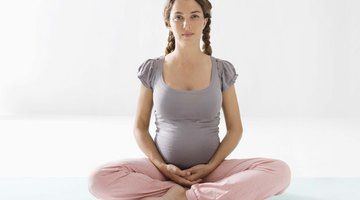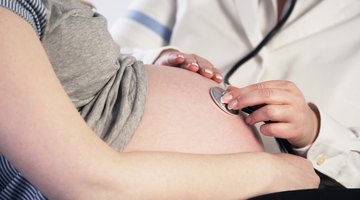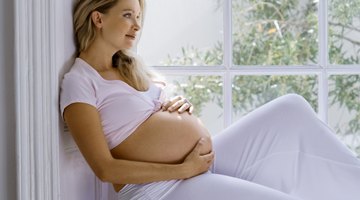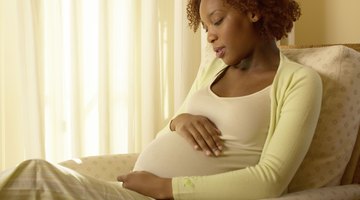Causes of Mild Cramps While You Are 15 Weeks Pregnant
Cramping in pregnancy is quite common. It can be alarming, but in most cases it does not mean anything is wrong with the pregnancy.
Women should always notify their medical professional to be sure the cramping is not associated with a pregnancy complication. If cramping is accompanied by other symptoms, such as bleeding, the medical provider should be contacted.
Ectopic Pregnancy
In about one out of 60 pregnancies, the fertilized egg implants somewhere other than in the uterus, such as in one of the fallopian tubes, according to the American Congress of Obstetricians and Gynecologists.
The pregnancy can't be carried to term due to the risk to the mother. As the egg grows it can separate from the tissues where it attached and cause internal bleeding. This is a medical emergency. Symptoms of an ectopic pregnancy include cramping and bleeding. If the egg separates, a woman may feel faint, lose consciousness or have pain in the shoulder.
False Labor

Causes of Menstrual-Like Cramping at 33 Weeks Pregnant
Learn More
Women can start feeling false contractions, called Braxton-Hicks contractions, during the 15th week and throughout the rest of pregnancy.
These contractions are usually mild and may be painless.
The uterus may tighten during movement and last for several seconds. These can be differentiated from real contractions because they do not occur consistently or get strong and closer together over time.
Preterm Labor
Any symptoms of labor that occur before the 37th week of pregnancy are considered to be preterm labor.
At 15 weeks, the risk of preterm labor is not great, but women should seek medical attention if symptoms develop. Such symptoms include vaginal discharge that is watery, mucus or bloody. Other symptoms include pelvic pressure, low backache, stomach cramps with or without diarrhea and regular contractions. Regular contractions occur in a regular pattern getting stronger and closer together. At 15 weeks of pregnancy medication may be administered and bed rest may be prescribed to prevent the labor from progressing.
Ligament Stretching

5 Possible Causes of Pelvic Pressure in Women
Learn More
During the second trimester, which begins with the 14th week, the muscles and ligaments that support the uterus begin stretching. Around the 15th week a woman will begin to have a belly bump. This is due to the uterus growing enough to extend from its normal position. The ligaments, or tough bands of tissue, have to stretch to accommodate the growing. This can cause pain in the abdomen and pelvic region.
Some women may recognize this as muscle pain, but to other women it may feel like menstrual cramping.
The pain may be more frequent on one side of the body over the other.
Moving, such as getting out of bed or coughing, can activate the pain. Resting and moving more slowly are the best ways to relieve the discomfort.











